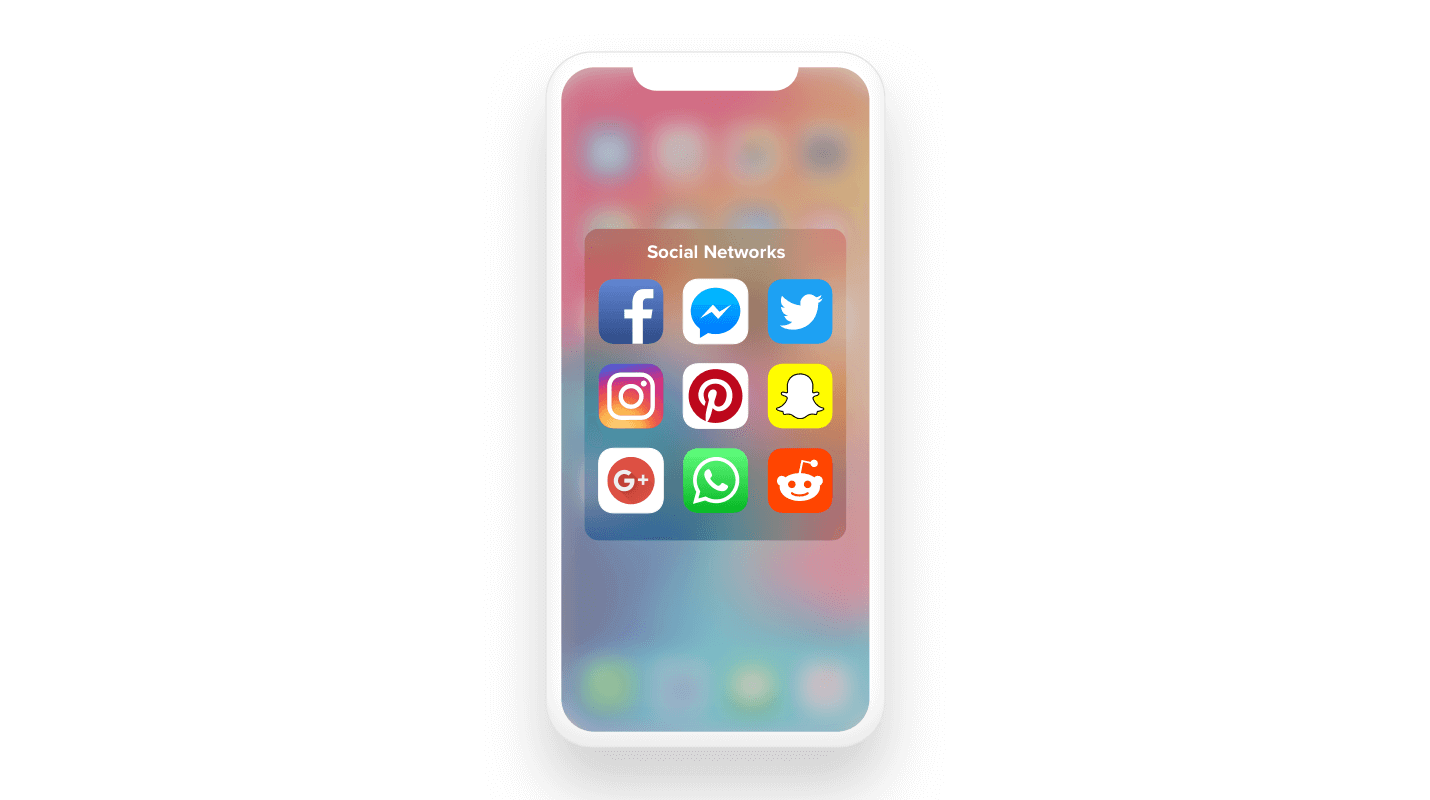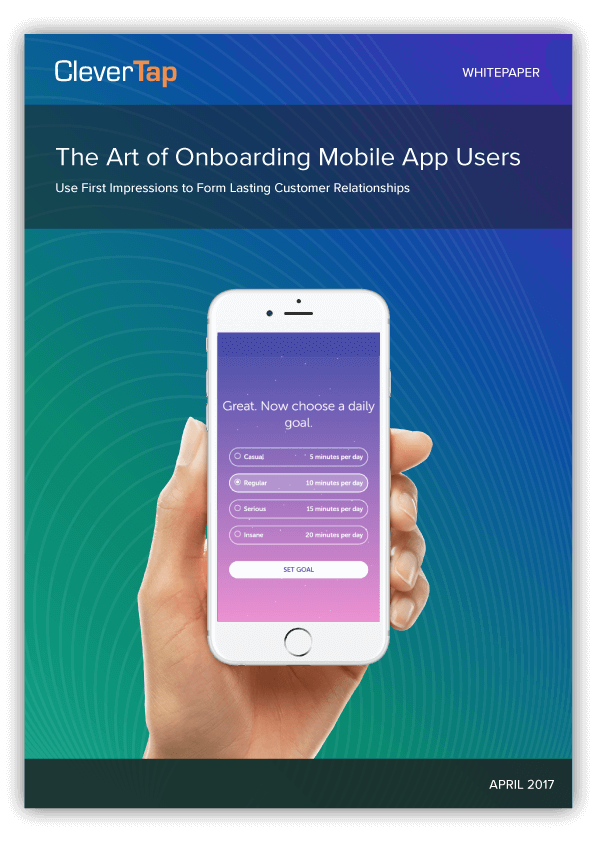If you’ve ever walked into a brick-and-mortar store to buy something only to turn to social media on your mobile phone to read reviews, you’re not alone.
45% of in-store consumers do the same, allowing social media to influence their buying decisions.1
Or you could be one of the 65% of consumers who research on their mobile phones or computers before buying an item in a physical store.2
This is now our reality: we carry several digital gadgets on us throughout the day and shift from device to device as the need arises. We expect an omnichannel experience from the brands we interact with, because that is how we live.
And this is why, as mobile marketers, it is incumbent upon us to build omnichannel marketing strategies that put the customer first. If we succeed in that, we increase the opportunity for our users to reach conversion and become long-term customers.
What is Omni Channel Marketing?
Omni channel marketing, as defined by our Mobile Marketing Glossary, is about giving app users one experience on all (omni) channels. It means providing potential customers with an integrated brand experience that is seamless, whether on desktop, mobile device, or in a brick-and-mortar store.
Brands that use omnichannel marketing strategies retain 89% of their customers on average. Meanwhile companies with no omnichannel efforts retain only 39%.**
Omni Channel Marketing Strategies
If you want to build an effective omni channel marketing plan, there are basically four strategies involved:
- Personalize for your omni channel users
- Give users a consistent experience across channels
- Engage users on every channel
- Use omni channel marketing system integration
Below, we’ll tackle them one by one.
1. Personalize for Omni Channel Customers
To market to your audience effectively, you must go for the granular, personalized approach. Forget blasting out generic messages to entire populations. Instead, group your users into neat segments based on the pages they visited, their product interest, their geographic location, their mobile OS, and even their names.
The more details you can collect on your customers, the more complete your user profiles become, which means you can segment them and message them more effectively. Instead of “Howdy Pardner!” you can greet them with “Hola, Esteban! Hope you’re enjoying Cancún, Mexico!”
The Convenience of Social Logins
One of the easiest ways to unlock your users’ identities is to enable social logins. By giving them the option to log in and register using their Facebook, Twitter, or Google accounts, you accomplish two things:
- You give users a quick, convenient way for them to log in, and
- You gain access to their social profiles, which in turn allows you to populate your user profiles more completely.
The long and short of it is: social profiles allow you access to profile data, making it quicker to set up segments and personalization for your messaging.

The Art of Onboarding Mobile App Users
Omni Channel Case Study: Brick and Mobile Luxury Retail
One of the most recognized brands in retail and a frequent recipient of awards for its marketing campaigns is Neiman Marcus.3 The brand has embraced technology to enhance its retail business, bringing innovation into both its physical stores and its digital marketing efforts, delighting customers in the process.
Take for example their Snap. Find. Shop. iOS mobile app that allows you to take photos of any shoes or handbags you see on the street. The app uses its image recognition software to match your photo with a similar product that you can purchase from Neiman Marcus.
Then they outfitted their stores with the Memory Mirror, which records a 360-degree video of the customer trying on new clothing and allows them to save the video in the mobile app for future viewing on desktop or mobile.
Of course, as you use their app and interact with their website, Neiman Marcus does its best to remember your preferences, shoe and clothing sizes, plus your geographic locations so that it can send relevant promotions to you via push notifications, email, and good old direct mail.
It’s a luxury shopping experience all the way from store to app to their direct mailers, and personalized to your size (literally).
2. Give Customers a Consistent Experience Across Channels
If a customer looks at your website on his laptop, moves on to use your app on his smartphone, and then checks the email he got from you, will the customer experience be consistent? Will the same products or options be available? Will the cross channel messaging be familiar or jarringly different?
The whole point of unifying your channel approach is to keep your communication free from conflicting messages, and your campaigns clear from accidentally competing with one another. Give your UX, your website, your emails, and all customer-facing material a common theme. This kind of familiarity becomes an assurance to users who are looking for trust signals.4
Omni Channel Case Study: Bring On the Coffee and the Magic!
I’ve written about Starbucks’ omnichannel marketing before, but it begs to be repeated that between their useful (and time-saving) mobile app, rewards program, website, emails/notifications, and their brick-and-mortar stores, they present a wholly consistent experience across all possible touch points. All unified by one idea: that of living a hip and highly caffeinated life.
Another brand with consistency even in the smallest details is Disney. From their direct mailers and their email marketing strategy down to the actual experience of walking through their theme parks using the My Disney Experience app, they practically own the very definition of “delighting customers.”
Look at how their website allows you to do everything from planning to purchasing, and how it’s responsive using any device (desktop, phone, tablet). Then look at how they’ve turned their app into a convenient tool for those wondering how long the lines are at a particular theme park attraction. Note also how their Magic Bands make it easy to store photos, identify areas you can access, and even work as your FastPass and your hotel room key. Totally magical!
3. Engage Users on Every Channel
Here’s the thing to remember if you want your omnichannel marketing to be effective: don’t force users down one, generic path just because it might be easier to track (and therefore an instant boost to your numbers). Instead, adapt to how your customers want to interact with you. Be ready to engage them wherever they come in.
A user might start thinking about a vacation after receiving your email or direct mailer. He may end up signing up for price alerts on tickets using a computer, but finally purchase via your mobile app after receiving a notification for a discounted ticket price.
Remember that 45% of consumers prefer a combination of online, mobile, and in-store shopping. 5 So you’ve got to offer them opportunities to convert at every stage.
Omni Channel Case Study: Marketing Automation for Brand Growth
Mailchimp started out by offering pain-free email marketing tools to the world, but it’s grown in the past few years into a full-fledged marketing automation platform of its own. So logically, it bakes an omnichannel approach into every campaign. From its website that proudly exclaims it’s the second brain for your business, to its educational emails (highly recommend their ecommerce newsletter called What’s in Store), to its mobile app experience, they provide users with endless opportunities to learn more about Mailchimp’s features, read through more resources, or sign up for an account.
4. Use Omni Channel Marketing System Integration
In order to gauge the success of your various omnichannel marketing campaigns, you must be able to track the correct metrics. But that won’t work unless the tools you use for marketing all play nicely with one another.
The benefits of consolidating your martech stack are clear: you reduce ambiguity and ensure data integrity. You eliminate the possibility of redundant efforts and ensure that data doesn’t simply remain unused in siloes. When it all comes together, you gain a better picture of the success of your campaigns and your efforts to engage your users.
Here’s how CleverTap helps brands orchestrate their omnichannel marketing strategies:
In an interview with Mashable,6 former Slack CMO Bill Macaitis talked about how an integrated tech stack contributes to growth:
“A robust marketing tech stack is a powerful resource to deliver a great experience. There is great software right now that allows you to target the right people, test messages and experiences that work, score leads so you understand when is the right time to reach out to them, nurture people through the buying process and onboard them successfully into your product.”
It’s a good quote and an important point about how effective omnichannel marketing tools help you achieve better results.

The Art of Onboarding Mobile App Users
Shivkumar M 
Head Product Launches, Adoption, & Evangelism.Expert in cross channel marketing strategies & platforms.
Free Customer Engagement Guides
Join our newsletter for actionable tips and proven strategies to grow your business and engage your customers.














































